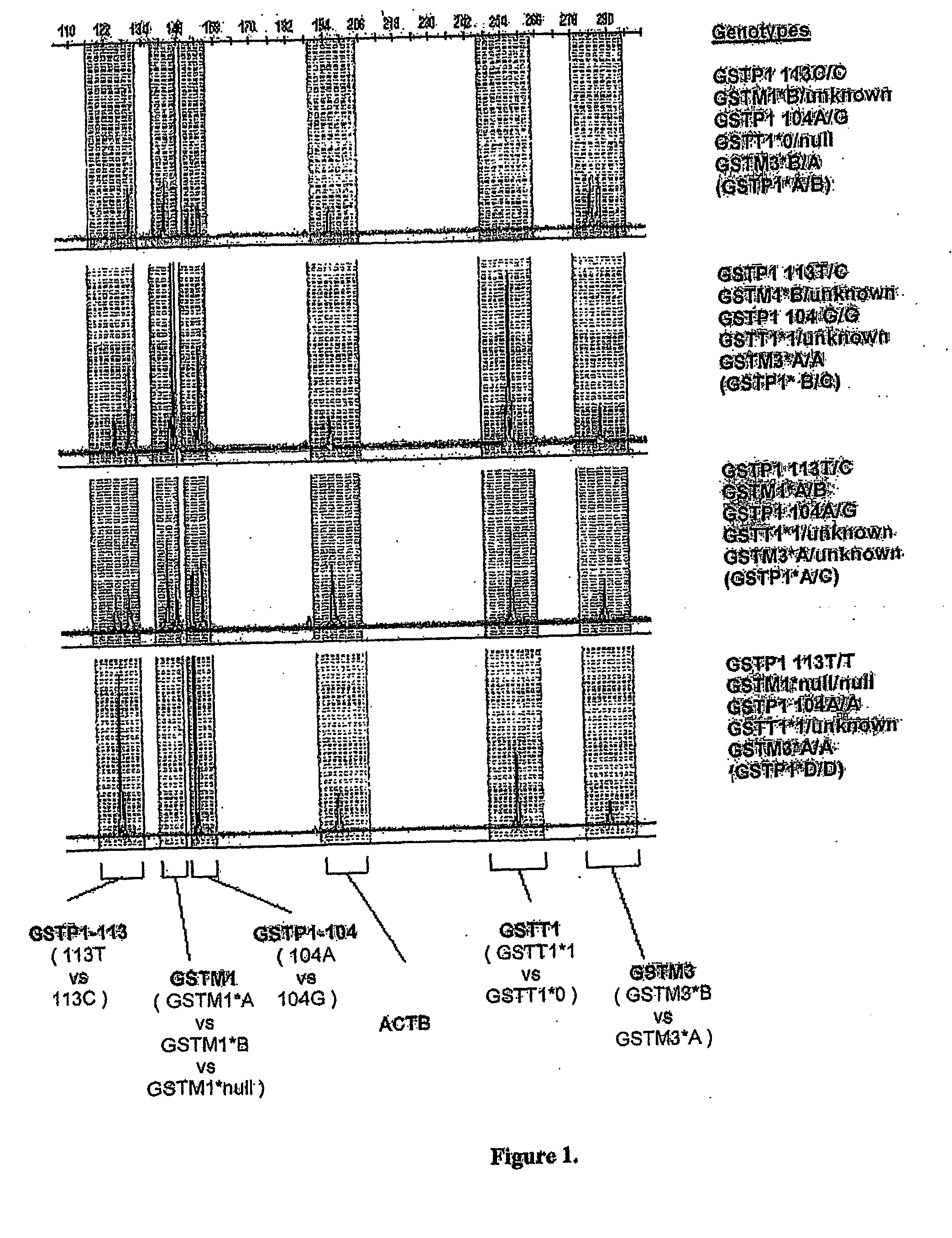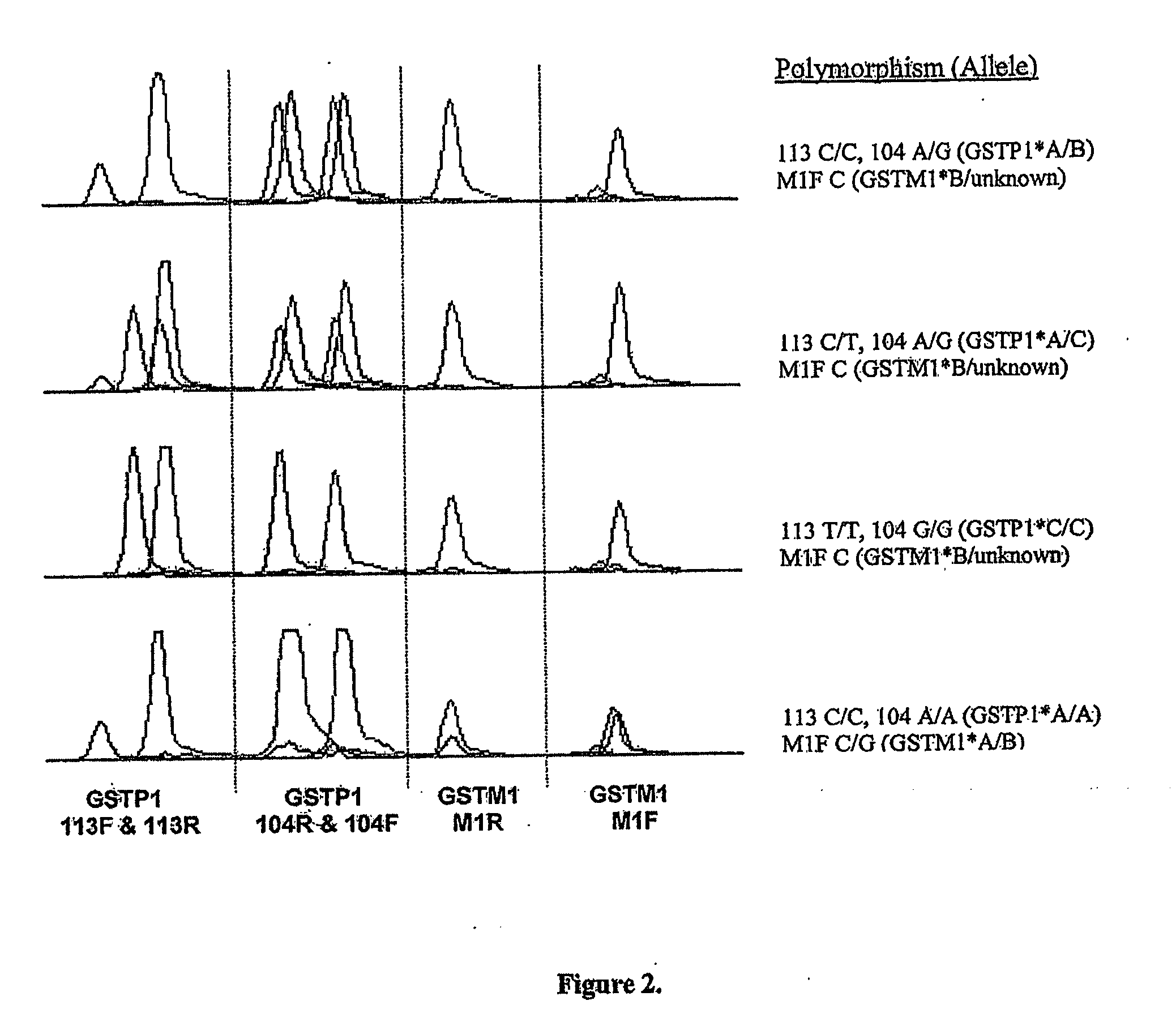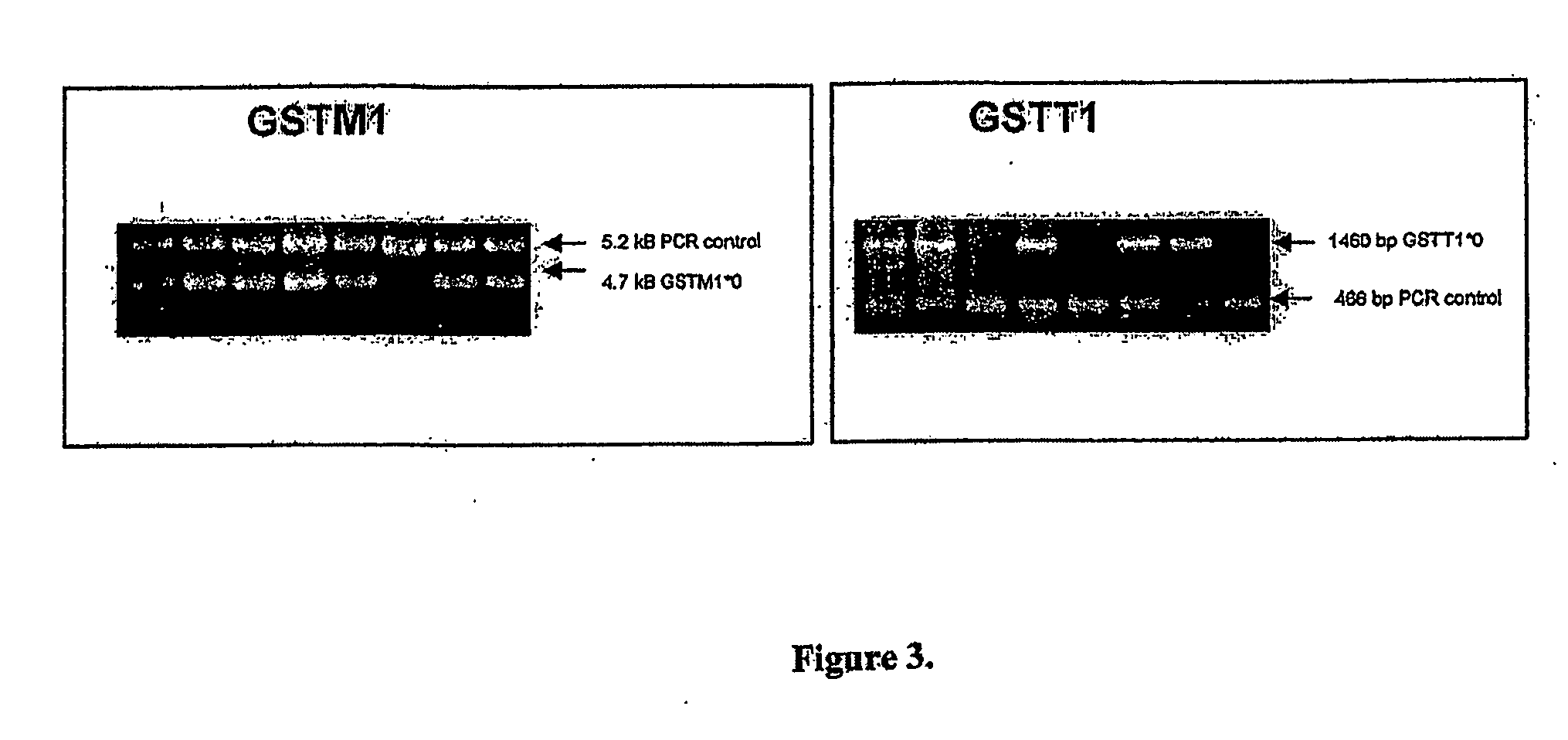High throughput detection of glutathione s-transferase polymorphic alleles
a glutathione stransferase and polymorphism technology, applied in the field of high throughput detection of glutathione stransferase, can solve the problems of affecting gsts have been shown to affect the toxicity of many such chemotherapeutic compounds in cancer patients, and chemotherapeutic agents exhibit greater toxicity in individual patients than they do. , to achiev
- Summary
- Abstract
- Description
- Claims
- Application Information
AI Technical Summary
Benefits of technology
Problems solved by technology
Method used
Image
Examples
examples
Patient Enrollment and Sample Acquisition
[0047] Informed consent was obtained from each subject or his / her guardian for the collection of DNA from peripheral blood samples, mouthwash, or buccal swabs. The informed consent was gathered based on a protocol approved by the University of Utah Institutional Review Board (IRB). Guthrie card samples used in experimentation (from which the patient identifiers had been removed) were obtained from the Utah Department of Health under the guidelines of the above-mentioned IRB-approved protocol.
[0048] Peripheral blood was obtained from some patients either through venipuncture or via an indwelling central venous catheter. Patients with white blood cell counts less than 1,000 cells per mm2 were excluded from peripheral blood collection. As an alternative, children above the age of 5 years could participate in the studies by donating buccal epithelial cells. This was most commonly accomplished by vigorously swishing a commercial mouthwash (Fres...
PUM
 Login to View More
Login to View More Abstract
Description
Claims
Application Information
 Login to View More
Login to View More - R&D
- Intellectual Property
- Life Sciences
- Materials
- Tech Scout
- Unparalleled Data Quality
- Higher Quality Content
- 60% Fewer Hallucinations
Browse by: Latest US Patents, China's latest patents, Technical Efficacy Thesaurus, Application Domain, Technology Topic, Popular Technical Reports.
© 2025 PatSnap. All rights reserved.Legal|Privacy policy|Modern Slavery Act Transparency Statement|Sitemap|About US| Contact US: help@patsnap.com



